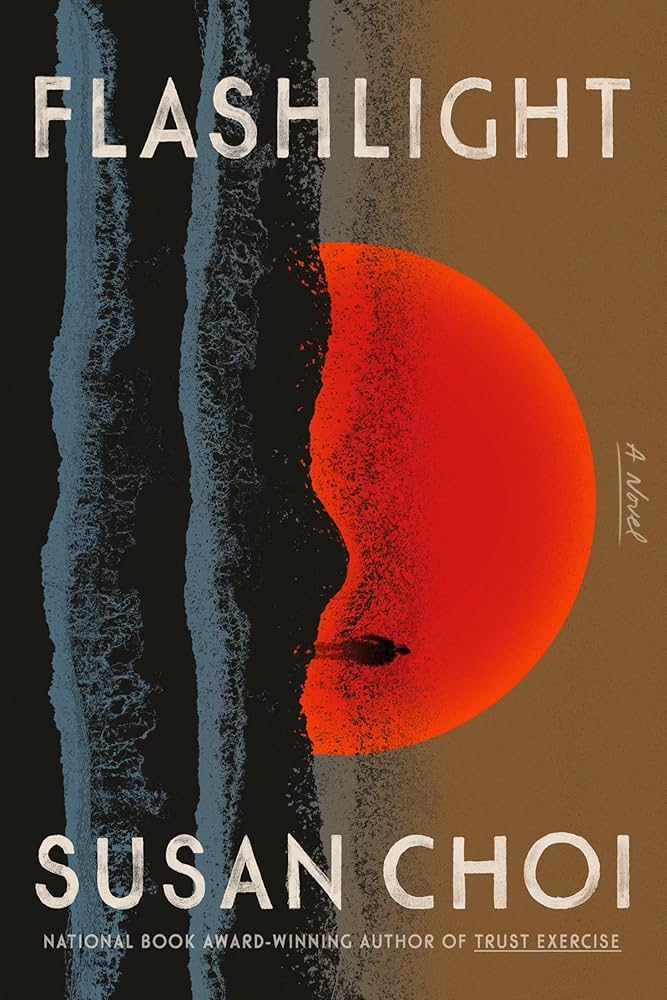These two books share a common point of departure. Both begin abruptly on the first few pages with a discrete life-altering event and then follow through on the extended ramifications of the narrative trigger. But despite the similar beginning and framing device, the novels differ markedly in structure and emotional tone.

The Names opens with a woman, Cora, accompanied by her very talkative 9-year-old daughter Maia, on her way to register her newborn baby son and officially name him. She is married to an abusive husband who expects her to name him Gordon, the name that has been given by long-standing family tradition to every first-born son. Knapp immediately confounds expectation by then splitting the narrative into three distinct streams. She creates a novelistic triptych based on whether Cora, in fact, submits and names the baby Gordon, uses a charming alternative, Bear, offered by her chatty daughter, or substitutes a name of her own choosing, Julian, that she hopes will honor and be appreciated by her husband even if it represents a break in the line of Gordons. The choice of each one of these three names results in a distinctly different narrative arc that emerges over the 35-year span of the book. In the Gordon stream, Cora and her children remain trapped in the tense and hostile domestic environment. In the second, Bear version, Cora accepts her daughter’s suggestion for a name. When her husband returns from work that day, he goes berserk and, in a rage, commits a savage murder. He is imprisoned and the mother and children achieve some degree of independence. Finally, in the third, Julian, narrative, where Cora gives the baby the name of her choosing, the husband grows increasingly violent and kills his wife a few years later. The children end up being raised by their maternal grandmother in Ireland and are forced to grapple with the untimely loss of both parents.

Flashlight is the story of a Korean man, Serk, who leaves his native country as a child with his family for a better life in Japan and grows up there. He moves to the United States as a young man, marries a beautiful but mysterious woman, Anne, from the Midwest, and is hired to join the science faculty of a small mid-level college. They have a precocious daughter, Louisa, who is an amalgam of her parents’ genetic input and more than match for both of them. The novel opens with Serk and the 10-year old Louisa walking along the beach in the early evening. The following morning, the girl is found unconscious and hypothermic at the water’s edge, and the father has vanished. The presumption is that he slipped among the rocks jutting into the ocean, was swept away by the waves and drowned at sea. All is not, however, as it seems. There is international skullduggery involved, though it would be unfair to disclose more. Regardless of the cause of the father’s disappearance, just as in The Names, the lives of all the main characters in Flashlight are irrevocably changed by the sudden unexpected event at the beginning of the narrative. The mother-daughter relationship, which can be fraught in the best of circumstances, is profoundly disturbed. The mother, who suffered for many years from undiagnosed multiple sclerosis, is unable to overcome her own physical disability and achieve inner peace. The daughter, despite her obvious intellectual and physical gifts, is incapable of empathizing with others and develops a nearly feral persona. Serk’s story resurfaces in a surprising turn of events. Although there is constant switching of viewpoints and time frames, Flashlight has a more conventional structure than The Names.
Why review these two books together? Doctors are taught and are obligated to treat patients one at a time. The guiding principle is that each person who seeks care should be evaluated and managed as an individual. The underlying cause of disease should be identified as precisely as possible, and the therapy should be prescribed that has the highest likelihood of success and matches each patient’s expressed life goals and priorities. However, patients are almost never seen in isolation. Doctors are trained to compare and contrast the men, and women and children that they encounter, to find commonalities and differences among them in the hope that this wider, more nuanced field of vision will sharpen their diagnostic acumen and improve their therapeutic recommendations for each patient that they treat.
I suggest that reading these two novels together provides a literary example of how an analysis of two books that at first appear to be similar reveals different insights about the ramifications of sudden, life altering occurrences. This is concretized by the contrasting authorial tone, warm and fuzzy in The Names versus cool and detached in Flashlight, and how we as readers engage with these two books.
The Names details the consequences of Cora’s impulsive decision about what name she should give to her newborn son. Flashlight recounts the unspooling of the characters’ lives after one of them disappears while walking along the beach with his daughter. In The Names, the fateful event is a personal human choice, in Flashlight it is an inscrutable act by an unseen, hostile foreign government. This stark difference is manifest in the way readers experience the subsequent stories. As one moves through the 35-year span of The Names, each 7-year interval in which Knapp picks up the story of the “three” sons feels organically linked to preceding period. The actions of Cora, her children, and the supporting cast of characters follow a trajectory that feels smooth and organic. It is true that while unexpected events intrude into each named narrative – Bear, Julian, and Gordon – the global sweep feels grounded and recognizable. There is admittedly a temporary sense of disorientation and a need to regain one’s footing in the plot as Knapp switches gears and advances to the next 7-year interval in the story of the triply named son. The narrative scenery and settings are abruptly changed, and it can take the reader a few pages to get oriented and mentally settled. But within each tale, there is pervading tenderness and a sense of human initiative.
In contrast, Flashlight has a staccato disjointed feel. The novel changes location and time period without clear reason. The nature of the characters, why they do what they do, and the basis for the choices they make, seem inexplicable, as if they are acting randomly and have no control over their lives. Unlike the protagonists in The Names, who one wants to see overcome their difficulties, and for whom one subconsciously roots for their well-being, there is a reluctance to embrace or even sympathize with the characters in Flashlight. They feel remote and distant until nearly the end of the book. It is Choi’s brilliance as a writer that maintains the cohesiveness of the composition and ensures that the reader remains fully committed to the novel and motivated to ultimately understand and come to grips with the plight of the people who populate the literary world she has created.
Occasionally, as readers, we may encounter two novels that complement one another. The Names and Flashlight fell into that circumstance for me. As a pediatrician, I was taught to try to understand the impact of primordial events on the life trajectory of my patients, how singular experiences can have long lasting repercussions for health and disease. But these events are not all the same. Some are internal, reflecting private human decisions, and others are external, reflecting trials and challenges imposed unpredictably by the outside world. The warmer narrative of The Names reflects the former circumstance while the opaque tone of Flashlight mirrors the arbitrary and cruel act that launches the story. For physicians, appreciating the disparate impact of vastly different life events on people will improve our understanding of patients’ experiences and help us provide more compassionate care. These two books, taken together, illustrate the underlying objectives of MedHum, namely, to explore how humanities can meaningfully shed light on the human experience and the practice of medicine.
The Names
Florence Knapp
Pamela Dorman Books/Viking, New York
2023, 328pp
Flashlight
Susan Choi
Farrar, Straus, Giroux
2025, 450pp
Web image created by Medhum.org











